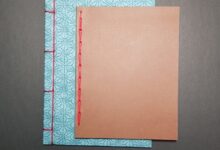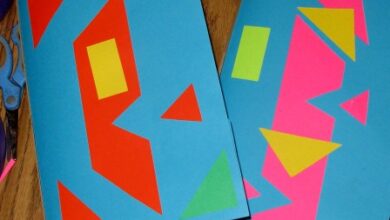BookBinding as a Therapeutic Craft: Relieving Stress through Creativity
Contents
- 1 The Healing Power of BookBinding
- 2 The Art of Bookbinding
- 3 The Strengths of Bookbinding as a Therapeutic Craft
- 4 The Weaknesses of Bookbinding as a Therapeutic Craft
- 5 A Table of Information about BookBinding for Therapy
- 6 Frequently Asked Questions (FAQs)
- 6.1 1. Is bookbinding a difficult skill to learn?
- 6.2 2. What types of materials are used in bookbinding?
- 6.3 3. Does bookbinding require expensive equipment?
- 6.4 4. Can bookbinding be done alone or in a group?
- 6.5 5. Is bookbinding suitable for all ages?
- 6.6 6. Can bookbinding be used as part of therapy?
- 6.7 7. Is bookbinding a popular hobby?
- 6.8 8. What types of books can be made through bookbinding?
- 6.9 9. Is bookbinding a sustainable craft?
- 6.10 10. Can bookbinding be used in conjunction with other therapeutic activities?
- 6.11 11. Can bookbinding be used as a mindfulness practice?
- 6.12 12. Is bookbinding a dying art?
- 6.13 13. Are online tutorials available for learning bookbinding?
- 7 Conclusion
- 8 Disclaimer
The Healing Power of BookBinding
Bookbinding is a therapeutic craft that has been around for centuries, providing individuals with a creative outlet and a way to relieve stress. At its core, bookbinding involves the art of making books by hand, a process requiring a great deal of patience, skill, and dedication. Additionally, it offers many benefits to mental health and emotional well-being, making it an attractive option for those who seek artistic expression and holistic healing.
The Art of Bookbinding
Bookbinding is an intricate process that requires attention to detail, focus, and commitment. It involves a variety of tools and techniques, including but not limited to cutting paper and leather, folding sheets, gluing pages and covers, and stitching bindings. Despite its complexity, the process of bookbinding can be calming and soothing for the mind and soul, allowing individuals to escape the stresses of everyday life and immerse themselves in a mindful and meditative activity.
The Strengths of Bookbinding as a Therapeutic Craft
1. Reducing Stress and Anxiety
Bookbinding is a craft that demands attention and focus from the maker, which can help reduce stress levels and anxiety. The meditative process of creating a book provides a sense of accomplishment and satisfaction when completed, mitigating stress and promoting relaxation.
🧘
2. Promoting Mindfulness
The repetitive steps in bookbinding can also help facilitate a meditative state, promoting mindfulness. By focusing on the task at hand, individuals can reduce distracting and overwhelming thoughts, create a sense of calm, and enhance self-awareness.
🧘♂️
3. Boosting Creativity
Bookbinding is a form of artistic expression that allows individuals to showcase their creativity and imagination through the design and layout of their book. This can boost confidence and self-esteem, as well as encourage further creative exploration.
🎨
4. Encouraging Learning
Bookbinding can also provide an opportunity for individuals to learn new skills and techniques that can be applied in a variety of areas, from publishing to design. This can help increase confidence and promote intellectual growth.
🧠
5. Fostering Social Connections
Bookbinding can be a social activity, offering opportunities to connect with individuals who share similar interests. This can promote a sense of community and belonging, reducing social isolation and promoting mental health.
👥
6. Promoting Physical Dexterity
Bookbinding requires fine motor skills, including cutting, folding, and stitching, which can help improve hand-eye coordination and promote physical dexterity. This can be particularly beneficial for individuals with physical disabilities or conditions that affect their mobility.
👐
7. Enhancing Patience and Perseverance
Bookbinding is a process that requires patience, perseverance, and attention to detail. Through the challenges and setbacks, individuals can learn valuable lessons in persistence and determination, which can be applied to all areas of life.
💪
The Weaknesses of Bookbinding as a Therapeutic Craft
1. Time-Consuming
Bookbinding can be a time-consuming process, requiring several hours or even days to complete a single book. This can make it difficult for individuals with limited time or busy schedules to engage in this activity.
2. Costly
Depending on the tools and materials used, bookbinding can also be costly. This can make it prohibitive for individuals on a tight budget or those who cannot afford to invest in expensive equipment.
3. Requires Space
Bookbinding also requires adequate space to lay out materials and work on the project. Individuals who have limited space or live in small apartments may have difficulty finding a suitable location for this activity.
4. Physical Demands
Bookbinding can also be physically demanding, requiring individuals to sit for extended periods and use fine motor skills that can be straining on the hands and fingers. This can be challenging for those with physical limitations or disabilities that affect their mobility.
5. Steep Learning Curve
Bookbinding is a skill that requires practice and experience to master. The learning curve can be steep, and individuals may become frustrated or discouraged in the early stages of the process.
A Table of Information about BookBinding for Therapy
| Benefits of Bookbinding as a Therapeutic Craft | Weaknesses of Bookbinding as a Therapeutic Craft |
|---|---|
| Relaxes the mind and body | Time-consuming |
| Promotes mindfulness | Costly |
| Boosts creativity | Requires space |
| Encourages learning | Physical demands |
| Fosters social connections | Steep learning curve |
| Promotes physical dexterity | |
| Enhances patience and perseverance |
Frequently Asked Questions (FAQs)
1. Is bookbinding a difficult skill to learn?
Bookbinding can be challenging to learn, especially for individuals who are new to the craft. However, with dedication and practice, anyone can develop the skills needed to create beautiful and functional books.
2. What types of materials are used in bookbinding?
There are several materials used in bookbinding, including paper, leather, adhesives, linen thread, and decorative elements such as ribbons and bookmarks.
3. Does bookbinding require expensive equipment?
While bookbinding can be costly, it doesn’t have to be. Simple binding tools can be purchased for a reasonable price, and many household items can be repurposed for use in bookbinding.
4. Can bookbinding be done alone or in a group?
Bookbinding can be enjoyed both individually and in a group setting. Solo bookbinding provides a meditative and calming activity, while group sessions offer an opportunity for socialization and creative collaboration.
5. Is bookbinding suitable for all ages?
Bookbinding can be enjoyed by individuals of all ages, although children will require supervision due to the use of sharp tools and adhesives.
6. Can bookbinding be used as part of therapy?
Yes, bookbinding has been used as a therapeutic activity for individuals dealing with anxiety, depression, and other mental health issues. It provides an opportunity for creative expression and promotes mindfulness, relaxation, and stress relief.
7. Is bookbinding a popular hobby?
Bookbinding is a popular hobby among artists, designers, and book lovers. It offers a unique combination of creativity and relaxation and provides individuals with an opportunity to create personalized keepsakes and journals.
8. What types of books can be made through bookbinding?
Bookbinding techniques can be applied to the creation of a variety of book types, including journals, sketchbooks, photo albums, recipe books, and more.
9. Is bookbinding a sustainable craft?
Bookbinding can be a sustainable craft, as it encourages the use of environmentally friendly materials such as recycled paper and repurposed fabric. Additionally, it promotes the idea of creating long-lasting items that can be cherished for years to come.
10. Can bookbinding be used in conjunction with other therapeutic activities?
Yes, bookbinding can be used in conjunction with other therapeutic activities such as yoga, meditation, and journaling. It can provide individuals with a creative outlet and an opportunity to focus on their mental and emotional well-being.
11. Can bookbinding be used as a mindfulness practice?
Yes, bookbinding can be used as a mindfulness practice. The repetitive motions and attention to detail can help individuals focus on the present moment and reduce stress and anxiety.
12. Is bookbinding a dying art?
While bookbinding is not as prevalent as it was in previous centuries, it is far from a dying art. There has been a resurgence of interest in bookbinding in recent years, with many book lovers and craft enthusiasts taking up the art as a hobby.
13. Are online tutorials available for learning bookbinding?
Yes, there are several online tutorials and resources available to individuals who want to learn bookbinding. These tutorials range from simple beginner projects to more advanced techniques and can be a valuable tool for individuals looking to explore the craft.
Conclusion
Bookbinding is a therapeutic craft that has been around for centuries. Through its meditative process and creative expression, individuals can reduce stress and anxiety, promote mindfulness, boost creativity, foster social connections, enhance physical dexterity, and improve patience and perseverance. However, it can be time-consuming, costly, and physically demanding, which can be a drawback for some. Nevertheless, bookbinding remains a popular hobby and a valuable tool for promoting mental and emotional well-being. We encourage you to explore this fascinating craft and discover the many benefits it has to offer.
Thank you for reading, and happy bookbinding!
Disclaimer
The information contained in this article is for educational and informational purposes only and is not intended as health or medical advice. Always consult with a qualified healthcare provider before making any changes to your diet, lifestyle, or treatment plan.
Originally posted 2023-06-28 20:00:00.









